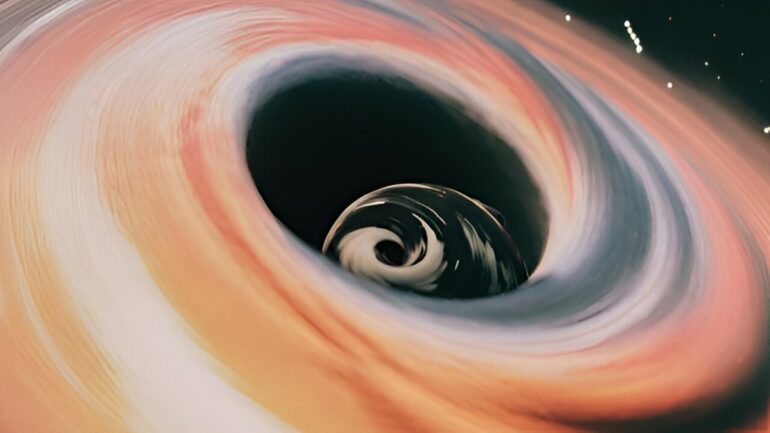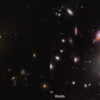Astronomers believe that at the heart of most, if not all, galaxies sits a titanic black hole with a mass that is millions or even billions of times that of our sun. These supermassive black holes cannot be directly created through the collapse of a massive star, as is the case with stellar mass black holes with masses tens of times that of the sun, as no star is large enough to birth such a huge object.
This means that there must be processes that allow black holes to grow to such tremendous masses. While the consumption of gas and dust and even stars around black holes can facilitate this growth, a quicker avenue for piling on mass is a chain of mergers of successively larger and larger black holes.
A paper published in Astroparticle Physics by Imre Bartos and Oscar Barrera from the Department of Physics at the University of Florida details how some “daughter” black holes created in such mergers could carry information about the “parent” black holes that collided to create them.
“We find that black holes that are born from the collision of other black holes carry information with them about the properties of their ancestors, including the ancestors’ spin as well as their mass,” Bartos says. “The key new focus of our research is the reconstruction of the spins of ancestral black holes, building on previous work that focused on the ancestors’ masses.”
Black holes have very few characteristics that can be used to differentiate them, only possessing variations of mass, angular momentum, or “spin,” and electric charge. Theoretical physicist John Wheeler of Princeton University, U.S. described this by saying “black holes have no hair.” Bartos adds that even in the face of these few characteristics and the “no-hair theorem,” it is still possible to use the spin of a black hole to unravel details about its origin.
“For example, black holes feeding from surrounding gas, or the previous collisions of ‘parent’ black holes, could result in high spin, while at birth through the death and collapse of stars, black holes often have low spin,” Bartos continues.
To conduct their study, Bartos and Barrera used a mathematical technique called Bayesian inference, taking measured black hole properties and their prior expectation of them as inputs and outputting inferred distributions of the ancestral black hole properties. The research is timely as physicists are using tiny ripples in spacetime called gravitational waves to learn more about black hole collisions and mergers.
“Recent observations of black hole mergers hint at the possibility that black hole assembly lines — places where multiple black holes merge consecutively, hence forming heavier and heavier black holes — may be common in the universe.
“This begs the question of how we can recover the properties of ancestral black holes from measurements of the newest generation,” Bartos says. “I am fascinated by the detective story of uncovering what happened to these black holes in the past and finding the fingerprints of previous generations there.”
More information:
O. Barrera et al, Ancestral spin information in gravitational waves from black hole mergers, Astroparticle Physics (2023). DOI: 10.1016/j.astropartphys.2023.102919
Citation:
Astronomers find black holes created in mergers carry information about their ancestors (2024, June 17)



